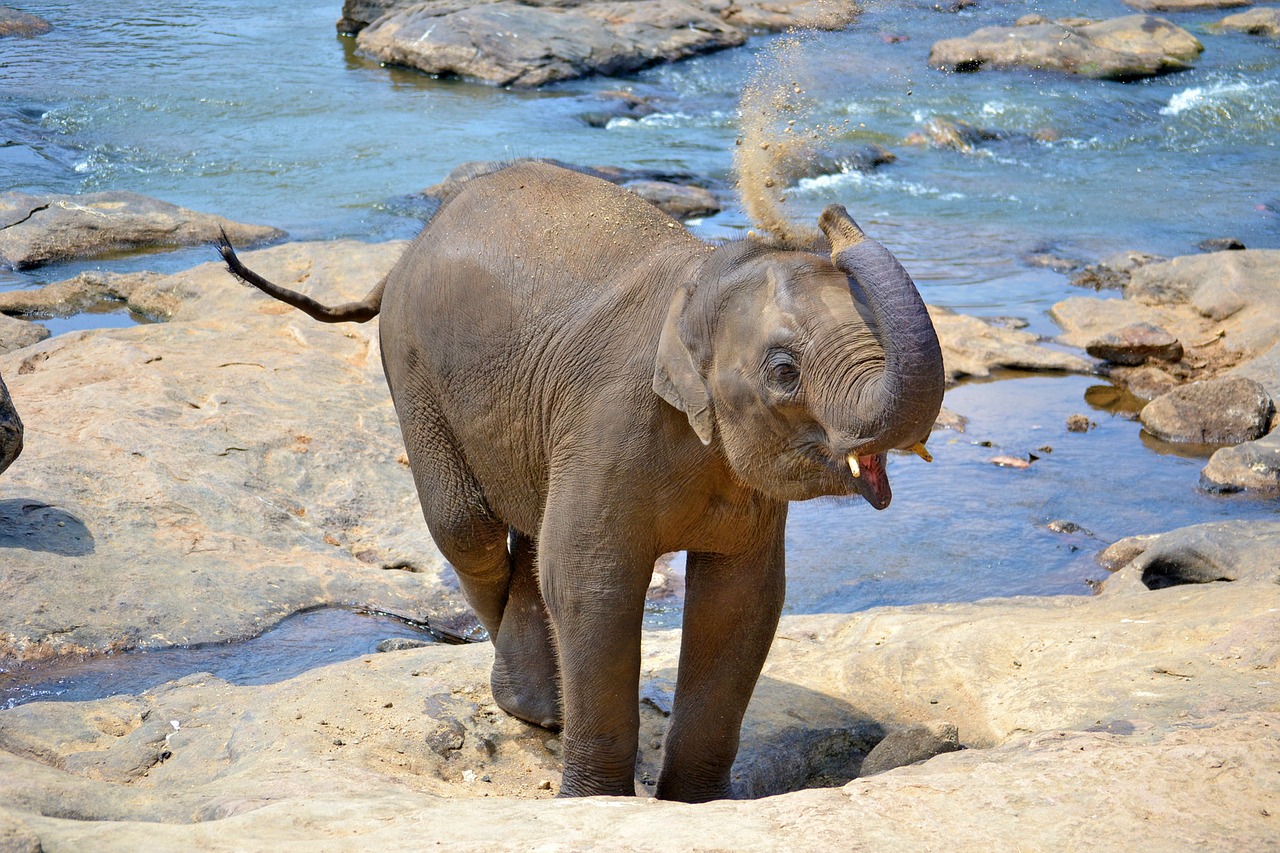Sri Lanka is a world class safari location with: an impressive big five of leopard, elephant, sloth bear, blue whale and sperm whale; designated Important Bird Areas and hundreds of species on display; and the largest yearly gathering of wild elephants in the world in Minneriya National Park – with herds of up to 400.
With 26 National parks, and an abundance of wildlife outside the parks, it’s tough to pick just 5 areas, but these are our favourites:
Udawalawe – elephants:
Sri Lanka is probably the best place in the world to spot elephants and Udawalawe is where to do it. Herds of up to a 100 roam the 119 square miles around the Great Uda Walawe Reservoir. You are virtually guaranteed a close encounter. On our visit: we were surprised by lone elephants emerging from the bush; almost alone watching a small group bathe; and we spent half an hour in the midst of a large herd. The park is also amazing for birdwatching we saw multiple eagles, egrets and pelicans.
Tip:
You can also visit the nearby Elephant Transit Home which cares for orphaned and sick elephants until they can return to the wild.
Trincomalee – diving:
Given Sri Lanka’s abundance of wildlife above ground, it’s easy to forget the astonishing opportunities for spotting marine life. With over 900 miles of coastline to explore, there are many phenomenal diving opportunities. Between October and May head to the west and southwest coasts, from May to October hit the northeast coast. Our top choice (between March and April) is Trincomalee for Swami Rock and Navy Island. Both are amazing dive sites. Swami Rock is home to large rays and schools of fish, plus the ruins of a 17th century temple. Navy Island Reef is massive. It’s 700 metres has room for divers of all abilities with shallow sections close to the shore and swim throughs further out. The reef is mostly healthy and attracts sting rays, eels and scorpion fish.
Tip:
If you’re in Trinco March/April or August/September you can go on whale watching (especially blue whales) and dolphin spotting trips. Trinco is also home to one of the best beaches on the island.
Yala – leopards:
Yala has the highest concentration of leopards in the world. If that doesn’t tempt you, it also has 215 species of birds and 44 mammals including the sloth bear. Whilst you may not see the elusive leopard or sloth bear, you will encounter roaming elephants, sambar deer, crocodiles and buffalo. The park has a mix of habitats from open plains to dense jungle and flooded lagoons and coastal sand dunes.
Tip:
A good camera with a zoom lens helps and take sunscreen.
Mirissa – whales:
Blue whales, the largest animals on earth, can be spotted in several locations in Sri Lanka. Mirissa is the best hotspot from November to April. These massive mammals can be up to 98 feet long and weigh up to to 190 tons. The early morning trips also offer the chance to see fin whales, sperm whales, dolphins, flying fish and whale sharks.
Tip:
If you’re visiting Sri Lanka between April and September then head to Trincomalee for blue whale sightings.
Kalpitiya – dolphins:
The beautiful Kalpitiya Peninsula in the north east is one of the least developed stretches of coast in Sri Lanka. From November to March, the phenomenal sight of thousands of dolphins, in pods of hundreds, can be seen on the morning boat trips. It’s a breathtaking experience.
There’s also good diving at this time of year at Bar Reef and Wilpattu National Park, home to leopards and bears, is nearby.
Tip:
We recommend the dolphin spotting trips from Dolphin Beach hotel. And if you fancy a splurge, this beachfront, eco resort is also an amazing place to stay with luxury tents, delicious, local food and amazing service.
